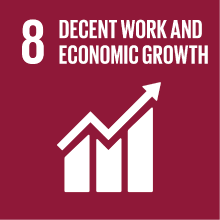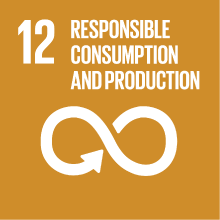GEOGRAPHY FOR TOURISM DESTINATIONS
- Academic year
- 2023/2024 Syllabus of previous years
- Official course title
- GEOGRAPHY FOR TOURISM DESTINATIONS
- Course code
- CT9015 (AF:361721 AR:191532)
- Teaching language
- English
- Modality
- On campus classes
- ECTS credits
- 9
- Degree level
- Bachelor's Degree Programme
- Academic Discipline
- M-GGR/02
- Period
- 1st Semester
- Course year
- 3
- Where
- VENEZIA
- Moodle
- Go to Moodle page
Contribution of the course to the overall degree programme goals
Expected learning outcomes
Students will achieve the following learning outcomes:
1. Knowledge and understanding: to know and understand the basic concepts and main models of tourism geography through the framework of political-economic geography
2. Capacity to apply knowledge and understanding:
- to use the concepts and models of the tourism geography to interpret, also critically, the socio-spatial dynamics generated by tourism in different destinations and at different scales
- to recognise phases and models of destination development
- to describe networks of actors, mobilities and tourism practices of destinations
3. Making Judgement:
- to recognise the economic, environmental and social drivers that can contribute to the sustainability of destinations
- to evaluate problems and critical issues generated by tourism
4. Communication skills:
- to present the contents in a clearly and correctly style
- to apply the concepts and terms of tourism geography in a coherent and appropriate way for the analysis of destinations
- to interact with peers and with the lecturer in a critical and respectful way both in presence and virtually.
Pre-requirements
Contents
Then the course will critically address the issues of the environmental, social and economic impacts of tourism, the relationship among tourism, landscape, heritage and communities, and the effects of globalisation and climate changes on tourism dynamics.
The final part of the course will be dedicated to the analysis and discussion of concrete cases of international and national destinations, including the city of Venice, defined by specific forms of tourism. Cultural, mountain, seaside, food and wine, outdoor and event tourism will be investigated in their capacity to activate sustainable tourism practices and considering future trends and tendencies.
Referral texts
- Slides and materials made available by the lecturer on the course Moodle space
- Some integrative parts from the following books to be communicated by the lecturer during the course:
Boniface, B., Cooper, C., & Cooper, R., 2016. Worldwide destinations: The geography of travel and tourism. Routledge.
Williams, S. and Lew, A.A., 2014. Tourism geography: Critical understandings of place, space and experience. Routledge.
Non-attending students:
- Chapters from the following books to be communicated by the lecturer:
Boniface, B., Cooper, C., & Cooper, R., 2016. Worldwide destinations: The geography of travel and tourism. Routledge.
Williams, S. and Lew, A.A., 2014. Tourism geography: Critical understandings of place, space and experience. Routledge.
- Integrative articles to read:
Meneghello, S. (2023). Mapping tourist landscapes in pandemic times: a dwelling-in-motion perspective. Tourism Geographies, 1-16.
Bertocchi, D., & Visentin, F. (2019). “The overwhelmed city”: Physical and social over-capacities of global tourism in Venice. Sustainability, 11(24), 6937.
Assessment methods
The final evaluation consists in a written exam based on 'open' questions on the topics covered during the course and the materials discussed during the course (slides and other material indicated). The written exam verifies knowledge of the concepts and models of tourism geography that allow the interpretation of tourism dynamics in different types of destinations.
The final assessment will also take into account the students’ involvement and participation in working groups. The evaluation of the working groups verifies the capacity to critically describe the tourism phenomena in specific destinations and the communication skills to clearly and correctly describe the contents.
The grade is given by 80% written exam plus 20% level of working groups’ participation.
For non-attending students
The final evaluation consists in a written exam based on 'open' questions on selected chapters of the two books indicated by the syllabus and communicated by the lecturer. The written exam verifies knowledge of the concepts and models of tourism geography that allow the interpretation of tourism dynamics in different types of destinations.
The final examination for non-attending students will also include the preparation of a written essay (project work) on a selected topic defined and agreed with the lecturer. The evaluation of the written essay verifies the capacity to critically describe the tourism phenomena in a selected destination and the communication skills to clearly and correctly describe the analysed case study.
The grade is given by 80% written exam plus 20% written essay.
Type of exam
Teaching methods
- In-depth analysis of specific case studies of destinations in the form of working groups
- Class discussion based on materials indicated by the lecturer
- Possible seminar sessions and visits to specific tourism contexts
Further information
Accessibility, Disability and Inclusion - Accommodation and support services for students with disabilities and students with specific learning impairments: Ca’ Foscari abides by Italian Law (Law 17/1999; Law 170/2010) regarding support services and accommodation available to students with disabilities. This includes students with mobility, visual, hearing and other disabilities (Law 17/1999), and specific learning impairments (Law 170/2010). If you have a disability or impairment that requires accommodations (i.e., alternate testing, readers, note takers or interpreters) please contact the Disability and Accessibility Offices in Student Services: disabilita@unive.it.
2030 Agenda for Sustainable Development Goals
This subject deals with topics related to the macro-area "Circular economy, innovation, work" and contributes to the achievement of one or more goals of U. N. Agenda for Sustainable Development


